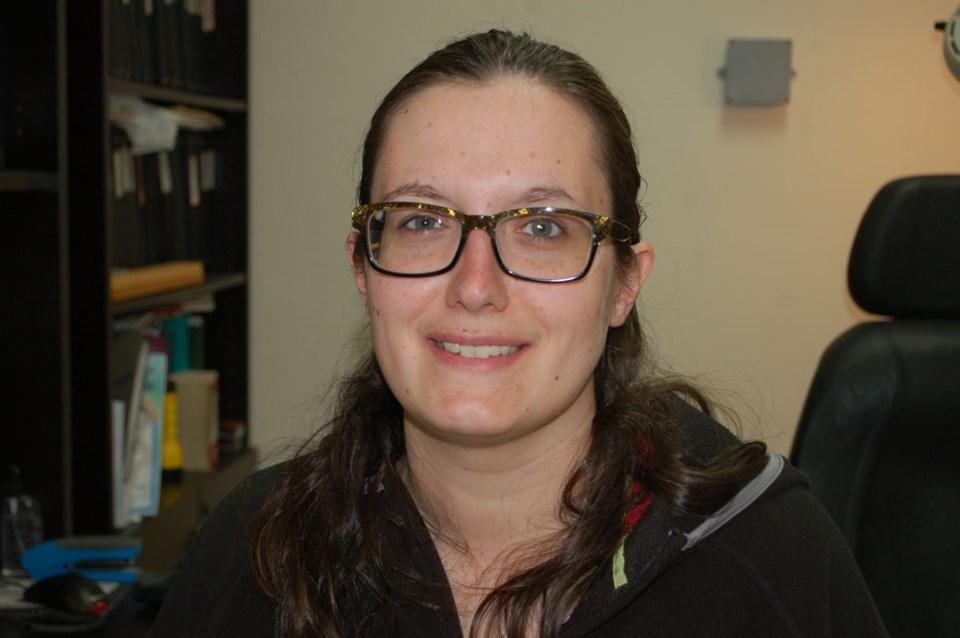While Vision Health Month (May) is now on the down slope, that does not mean Saskatchewan residents can start ignoring their vision health care needs until next May.
Eye care needs are a year-round concern for both clients, optometrists and ophthalmologists. That includes doctor of optometry Sarah Sliva, of South East Eyecare in Estevan, who suggests regular eye exams need to be part of everyone’s preventative healthcare routines.
Optometrists confer and refer with other medical practitioners on a regular basis, taking a team approach with examinations and diagnoses. She cited examples where an eye examination may uncover a developing medical problem, while a routine physical can lead to a follow-up eye examination.
“A comprehensive eye exam does more than test your vision. It is an important part of maintaining your overall health,” said Sliva.
Maintaining a good working relationship within the medical community is essential, she noted. People with diabetes, as an example, will often need to maintain a close relationship with both of these healthcare providers.
Like other medical professions, the optometrists have witnessed “incredible improvements in examination materials and equipment, it’s almost scary at times,” she said with a smile. “For instance, we now measure the back layers of the eye, extending the testing capabilities, using different technologies, considering more options. It’s great for putting the various pieces of the puzzle together.”
On the other hand, some basic eye examination routines never change, nor should they, she said. “Technology gives us objective data that we then have to interpret and sort out as to what is good and useful for our diagnosis and what isn’t.”
Investment in updated equipment and material is justified on a regular basis and is part of doing business in the optometric community.
She said even young children should be introduced to their first eye examination as early as six to nine months. Even though it’s obvious the baby will not be able to communicate verbally, “there is a lot we can tell just by shining a light on the subject,” she said with another smile. A retina scope can reveal a lot of basic information and indicate potential problems. Catching those situations early makes for more effective treatment and corrections.
A little later on, young children in need of eye care can sometimes become a little apprehensive, but generally speaking, said Dr. Sliva, they take to the exams and their routines pretty well.
Adults should have their eyes examined at least once every two years, while seniors should be checking in for checkups annually. And, just because you think you have good vision, is no reason to skip an examination since, as noted earlier, a regular eye examination may expose another related, or even unrelated, emerging health issue that has not been detected. In other words, some underlying conditions may exist that an eye exam could reveal, such as a brain tumour, aneurysm, autoimmune disorder, thyroid disease, liver disease, multiple sclerosis, Parkinson’s disease and a few other neurological or brain disorders.
The eye exams today give optometrists a close look at blood vessels, optic nerves and eye structures, which helps them and other practitioners look for serious health risks.
A brain tumour, for example, can cause a loss of peripheral vision or can damage nerves that control eye muscles and that can lead to double vision or abnormal eye movement, she suggested. “So, during an exam we examine the optic nerves, test peripheral vision and eye muscle function.”
Sliva, who has been principal owner of the clinic for five years now, is joined in the Souris Avenue practice by Dr. Melissa Vass. The two feel another key element is to build an ongoing relationship with clients so that continuity of care is maintained, while keeping in mind the patient/client is ultimately in charge of their healthcare.
Working with other practitioners can lead to additional calls for such things as CT or MRI scans, for instance, to provide the best follow up care or treatment options available.
And then there is the age-old question.
Contacts or framed glasses?
Dr. Sliva laughs, but does not dodge the question.
“There are factors. Sometimes the differences of the eye make contacts the best way to go. There are vanity issues, too. Some people prefer frames. Even that is something we can recommend once we get to know our client better and can help them sort out their needs versus their wants. You do that if you have a good, strong ongoing relationship with your optometrist.”




